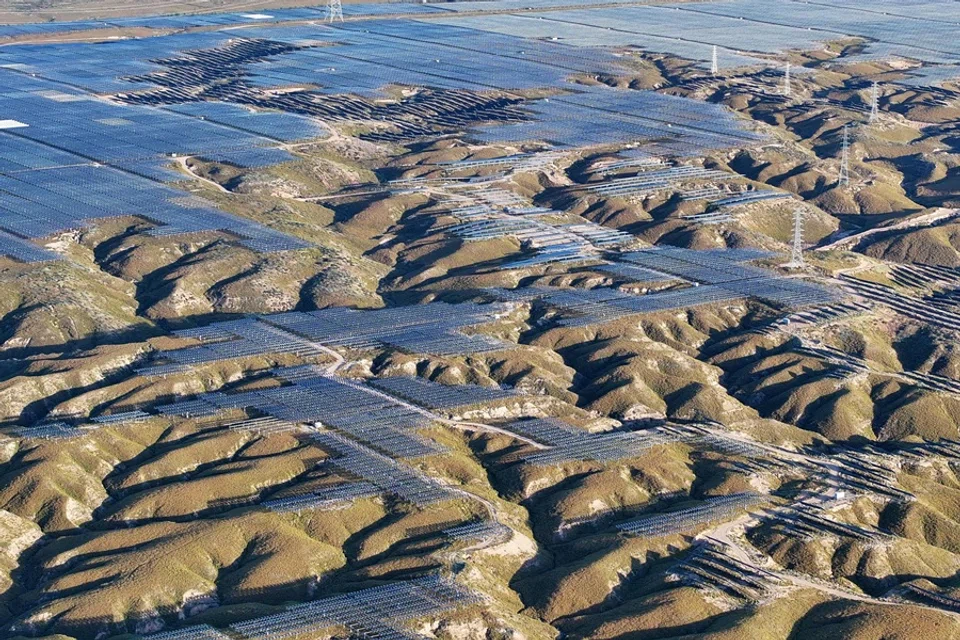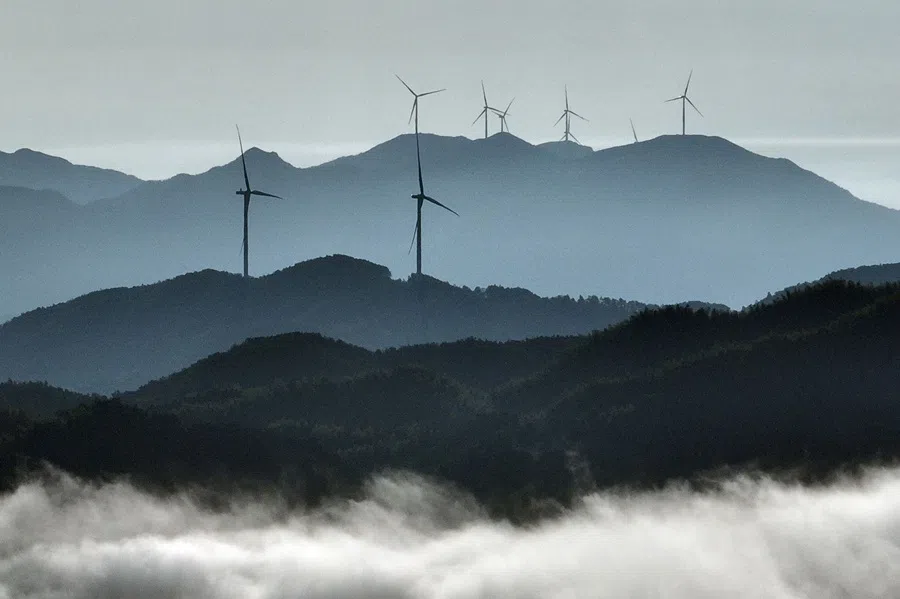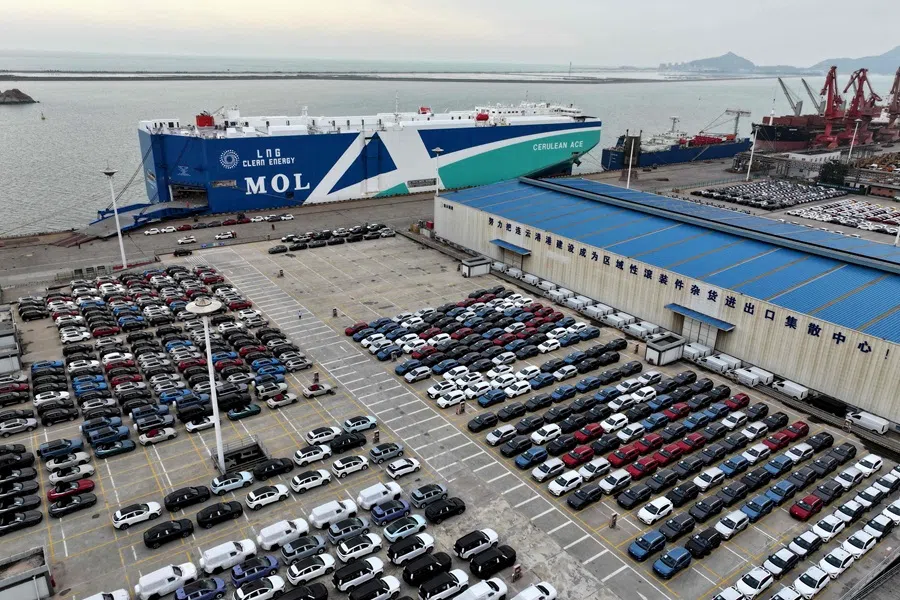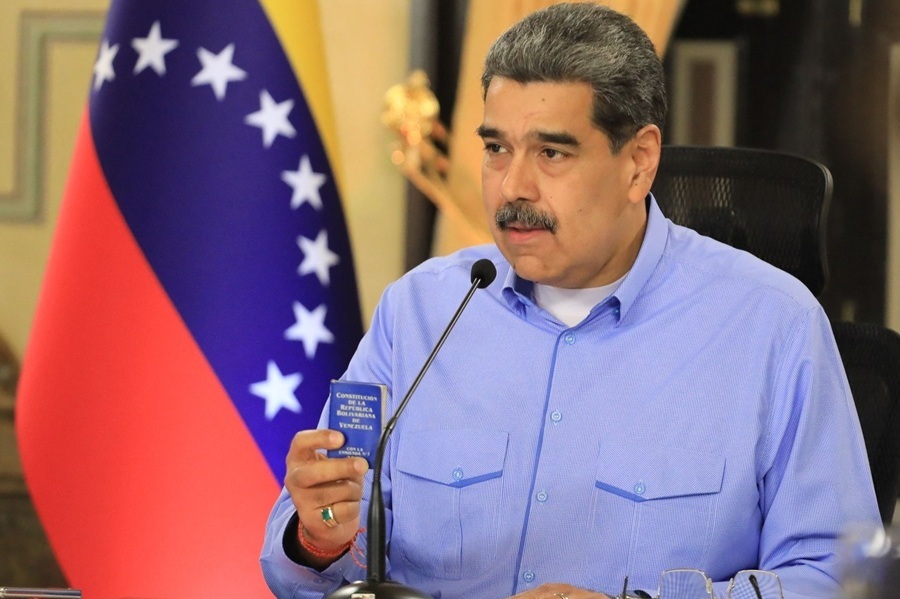Beijing’s green vow: Enough to save the planet — or just hot air?
Can China, the world’s largest emitter of greenhouse gases and a global leader in clean energy, deliver on its first economy-wide climate pledge without undermining its economic, industrial and energy priorities? Genevieve Donnellon-May ponders the question.

On 24 September, Chinese President Xi Jinping announced China’s new Nationally Determined Contribution (NDC) — the climate-action plan that countries under the Paris Agreement must submit to the United Nations (UN) every five years — via video statement at the UN secretary-general’s Special High-Level Event on Climate Action, ahead of COP30 in Belém, Brazil.
China: absolute emissions target
Building on his statements in April this year and Executive Vice-Premier Ding Xuexiang’s remarks at COP29 last year, President Xi pledged to reduce economy-wide net emissions by 7-10% from peak levels by 2035, expand wind and solar capacity sixfold to 3,600 gigawatts, raise the share of non-fossil fuels in primary energy consumption above 30% and ensure that new energy vehicles (NEVs) become mainstream in new car sales. The new NDC also includes institutional measures to support implementation and commits to “basically establish a climate-adaptive society”.
This is China’s third NDC, but the first to commit to an absolute, economy-wide emissions reduction, and which covers all greenhouse gases (GHGs).
This is China’s third NDC, but the first to commit to an absolute, economy-wide emissions reduction, and which covers all greenhouse gases (GHGs). It also marks a turning point from previous carbon intensity-based metrics that measured emissions per unit of GDP but did not place a cap on absolute emissions. Doing so signals a shift towards managing total emissions while aligning climate goals with energy security and development priorities. Importantly, the NDC extends until 2035, outlining for the first time a post-peaking pathway.

China’s first NDC, published in 2015 and developed jointly with the US, marked Beijing’s initial formal commitment under the Paris framework. This was followed by the second NDC in 2020, which pledged to peak carbon dioxide (CO2) emissions before 2030 and to reach carbon neutrality by 2060. Other commitments included reducing carbon intensity by more than 65% compared to 2005 levels by 2030, and expanding wind and solar power capacity to over 1.2 billion kilowatts (1,200 gigawatts) by 2030.
Green transition: China’s economic driver
Domestic considerations help explain the conservative targets set out in the 2025 NDC. Energy security remains paramount. Chinese leaders view energy vulnerability as a core strategic risk. The war in Ukraine underscored the volatility of global oil and gas markets, while supply disruptions exposed the risks of overreliance on imports. Blackouts across the country in 2021-2022 exposed vulnerabilities of intermittent renewables, prompting Beijing to approve new coal-fired power plants.
Despite substantial investment in wind, solar and other technologies, coal still supplies over half of China’s consumption. Its abundance, political reliability and role in grid stability ensure it will remain a cornerstone of China’s energy mix. The cautious NDC reflects this reality, signalling Beijing’s reluctance to pursue overly aggressive emissions cuts.
In addition to reducing emissions, the NEV surge demonstrates China’s ability to link climate commitments with industrial policy, consumer adoption and global market leadership.
China’s economy is increasingly driven by decarbonisation. As the global hub for clean energy supply chains, the country dominates renewables, batteries and electric vehicles (EVs), which now contribute roughly one-quarter of economic growth, reframing decarbonisation as a driver of development rather than a constraint. This industrial and technological leadership underpins Beijing’s climate strategy, reinforcing the overlap between growth and the green transition.
The rapid expansion of NEVs — a key target in the 2025 NDC — illustrates this dynamic: driven in part by government subsidies and various incentives, in 2024, China’s NEV production and sales reached 12.89 million and 12.87 million units, up 34.4% and 35.5% year-on-year. In addition to reducing emissions, the NEV surge demonstrates China’s ability to link climate commitments with industrial policy, consumer adoption and global market leadership.
A tool of climate diplomacy
China’s absolute economy-wide emissions target carries global significance. By signalling a peak and eventual decline in emissions, the 2025 NDC shapes expectations for international climate action. Responsible for roughly 90% of global CO2 growth for the past decade and accounting for 30% of global GHG emissions, Beijing’s commitments may provide a critical benchmark for other major emitters.

More broadly, the 2025 NDC links domestic climate action to China’s international positioning. The absolute emissions reduction pledge serves not only as a domestic milestone but also as a tool of climate diplomacy, reinforcing Beijing’s role in global climate governance.
... any commitment by Beijing is already perceived as surpassing US action.
With the US retreating from climate leadership under a second Trump presidency — marked by withdrawal from the Paris Agreement, weakened environmental protections and public dismissals of climate science — China’s role becomes even more pivotal. In this context, any commitment by Beijing is already perceived as surpassing US action.
Through South-South cooperation and initiatives like the Action Plan on Early Warning for Climate Change Adaptation, China can bolster its credibility and influence, particularly across the Global South, positioning itself as both a climate leader and a geopolitical alternative to the West.
Beijing: under-promise, over-deliver on climate
Challenges must be acknowledged. Beyond the lack of specific targets for non-carbon greenhouse gases (like methane), uncertainty over the timing of China’s emissions peak and continued reliance on fossil fuels, other concerns must be acknowledged.
Chief among them is insufficient ambition: a 7-10% reduction from peak levels by 2035 falls far short of climate science requirements, particularly given China’s outsized share of global emissions. Reactions are mixed, with the media describing the targets as “conservative” or “too weak” or failing to match the pace of clean energy expansion on the ground.
Previous analyses suggested a minimum reduction of 30% from 2023 levels to align with a 1.5°C pathway. Organisations such as the Centre for Research on Energy and Clean Air recommended an absolute 30% cut between 2023 and 2035, while the International Energy Agency argues that 35-60% reductions are needed for emerging market economies, including China, to meet the 1.5°C goal.
If the ongoing expansion of renewables and EVs continues, and emissions decline at the current rate of around 1% year-on-year (first half of 2025), China could overdeliver on its 2035 target.

Others have more favourable views, highlighting China’s track record and trajectory. If the ongoing expansion of renewables and EVs continues, and emissions decline at the current rate of around 1% year-on-year (first half of 2025), China could overdeliver on its 2035 target.
Past achievements reinforce this potential, also demonstrating Beijing’s reputation of under-promising and over-delivering: the country reached its 1.2 billion-kilowatt wind and solar capacity target six years ahead of schedule in 2024, reflecting both rapid mobilisation and conservative initial pledges.
In this light, the new NDC may seek to signal international responsibility and industrial progress while avoiding domestic or political disruption, though its scientific rigour and global adequacy remain limited.
Nonetheless, President Xi’s statement that China is “striving to do better” signals potential openness to strengthen future commitments.
China’s 2025 NDC links domestic climate action to economic growth and industrial leadership while signalling a post-peak emissions trajectory. Globally, it enhances Beijing’s climate diplomacy and South-South influence amid US retreat. Yet modest reduction targets, continued fossil fuel reliance, and peak uncertainty limit sufficiency — leaving the world’s climate trajectory contingent on China’s next moves.





